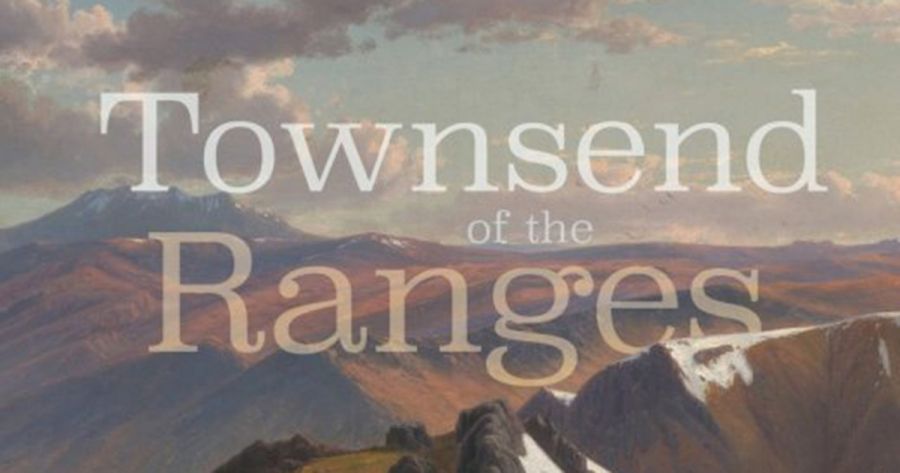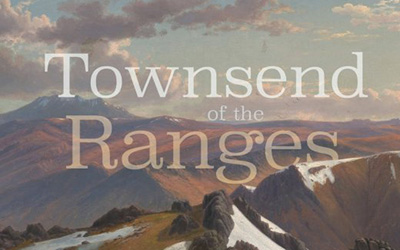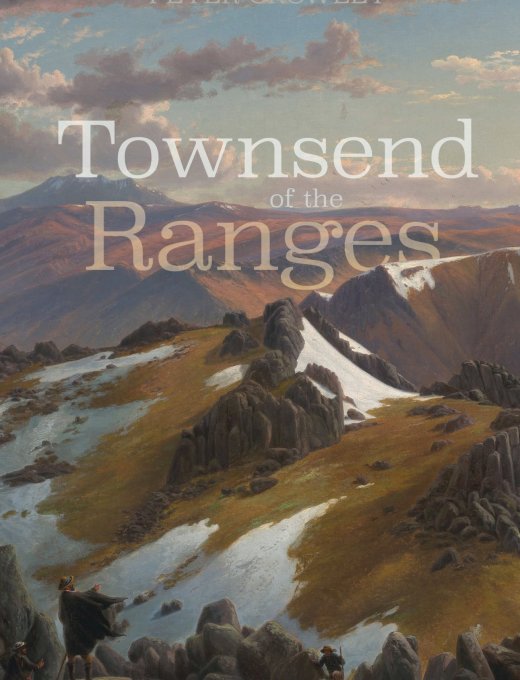
- Free Article: No
- Contents Category: Biography
- Review Article: Yes
- Article Title: Surveyed by Townsend
- Article Subtitle: A remarkable life of maps
- Online Only: No
- Custom Highlight Text:
This is a brave book, for it is the biography of a phantom. Archives hold ample evidence of the many professional achievements of the surveyor Thomas Scott Townsend, but of him personally almost nothing is known. Townsend left little trace of his passions, frustrations, or loves, the substance that animates biographies. A letter that Townsend wrote to his brother in 1839 is the only item of his private correspondence known to exist. And yet somehow the book works, and brilliantly so. Peter Crowley has written a compelling account of a remarkable figure in Australian history.
- Featured Image (400px * 250px):

- Alt Tag (Featured Image): Seumas Spark reviews ‘Townsend of the Ranges’ by Peter Crowley
- Book 1 Title: Townsend of the Ranges
- Book 1 Biblio: NLA Publishing, $36.99 pb, 352 pp
- Book 1 Cover Small (400 x 600):

- Book 1 Cover (800 x 1200):

- Book 1 Readings Link: https://www.readings.com.au/product/9781922507693/townsend-of-the-ranges--dr-peter-crowley--2024--9781922507693#rac:jokjjzr6ly9m
Townsend was born in Buckinghamshire in 1812. After arriving in Sydney in 1829, he sought and soon found work as a surveyor. From 1831 until his departure from Australia in 1854, Townsend was employed in the department of Thomas Mitchell, surveyor general of New South Wales. Mitchell became a friend, and a foe, of sorts. Mitchell admired Townsend and his talents, and as a result worked him too hard, exploiting his dedication and sense of duty. Townsend spent more months in the field, more nights sleeping in the open, more time exposed to the elements, than was reasonable. Early in the book we learn that Townsend eventually became a recluse, his mental health poisoned by jealousies and delusions. He committed suicide in London in 1869, a lonely, resentful man estranged from his wife and child and entirely divorced from his achievements as a surveyor in Australia. Crowley ponders Mitchell’s role in Townsend’s precipitous decline, though gently. The author is inclined to question rather than judge.
Townsend’s role as a New South Wales government surveyor took him across Mitchell’s vast jurisdiction, which until 1851 included the Port Phillip District, now known as Victoria. The productivity and extent of Townsend’s work is astonishing. He helped Charles Tyers survey Western Victoria; worked extensively in Gippsland, where his surveys involved mapping ocean as well as land; and planned towns across the Port Phillip District and New South Wales, including Albury and Wagga Wagga, to select two familiar names. Anyone who has lived in or visited south-eastern Australia will likely have passed through a town or along a stretch of country surveyed by Townsend. But never did volume diminish substance. Townsend’s many surveys, one and all, show his dedication and mastery of craft.
In Townsend’s career of remarkable feats, among the most notable were his surveys of the Australian alps; the ‘Ranges’ of the book’s title. Now as then, the alps are both beautiful and forbidding. Townsend and his men, labouring with inadequate support and provisions, endured long periods of bitter cold and isolation to map much of the Ranges. This triumph, Crowley explains, is essentially unknown. Townsend spent the majority of his Australian career in the bush, far from the public gaze. This and other circumstances meant that he laboured in relative anonymity. Later, his deep psychological troubles, and the manner of his death, likely confirmed his exclusion from the annals of Australian colonial history. Few Australians connect the name of Mount Townsend, our second-highest peak, to the man who walked the alps, month on month, to chart their form and wonder.
For whom were Townsend’s surveys useful? Aboriginal people already knew their way around Country, intimately so. Their surveys, written in lore and culture, had been refined over tens of thousands of years. Rather, Townsend was showing colonists the way, and he borrowed from Aboriginal expertise to do so. In common with other early colonial explorers, he followed Aboriginal paths, and drew on Aboriginal knowledge, inscribed everywhere on Country and in the minds of guides. Only whitefellas saw Australia as a blank space, unmapped and unknown. For Aboriginal people, the highways and characteristics of Country had been marked out since time began. Crowley’s appreciation of Aboriginal knowledge, and his interest in the extent to which it influenced Townsend’s work, is a strength of this book. That Crowley then pushes the point further adds to this strength. He writes of our ‘disrespect’ for the landscape, its beauty and importance. Too many of us ignore Aboriginal knowledge and practice. We are failing country, in both the Aboriginal and non-Aboriginal senses of the word.
Because so little is known about Townsend himself, this is essentially a biography of his career. Still, Crowley does what he can to extrapolate from the professional to the personal. He offers useful contextual information, always judiciously. Every addition has its place, none artificial or unnecessary. Where Crowley is forced to speculate, he does this carefully, and within the bounds of his research. This research, clearly extensive, is conveyed to the reader with a deft touch. We follow Townsend up and down hills, through valleys, across plains, and up and down more hills, but the narrative is neither repetitive nor dull. Given the limited nature of Crowley’s primary sources, this is a significant authorial feat.
There is a scattering of typos in this book; a final check would have eliminated clichés. Crowley is a fine writer, which makes his resort to cliché all the more jarring. Curiously, there is no index, an ever more common and regrettable trend in scholarly publishing. An index is a necessity, especially in a book that will stand as the definitive account of its subject.
If these are quibbles, the one disappointment, beyond the author’s influence, is the quality of the illustrations. The book includes images of many of Townsend’s surveys, but the reproductions are poor, so much so that it becomes hard to spot the beauty and detail of his work. This disappointment introduces a discrepancy: Townsend’s surveying genius, which Crowley describes evocatively, is not reflected in the images offered to the reader. We see maps and surveys, but not Townsend’s inspired creations. Of course, larger and better illustrations would have meant trading a paperback printed on cheapish paper for a book more expensive to produce and buy. In Townsend’s case, it would have been worth it.


Comments powered by CComment